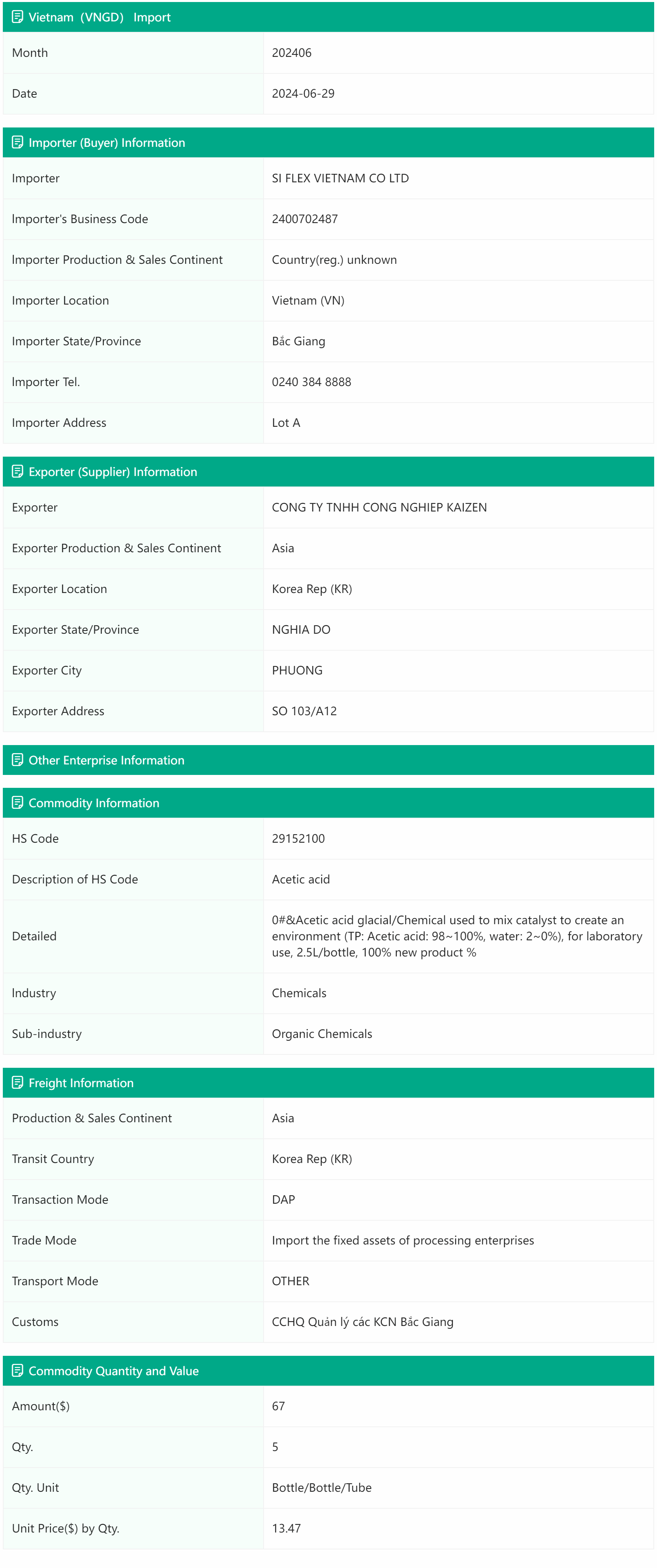Please Sign in to view recently saved searches.
Located in the eastern part of the Indochina Peninsula, Vietnam boasts diverse culture and advantageous geography, emerging as a significant force in Southeast Asia. Its economy is primarily driven by processing and trade, with a high dependency on foreign trade.
Vietnam's GDP growth is among the highest in Southeast Asia, with foreign trade playing a crucial role in its economy. The service sector accounts for over 40% of the economy, while industry and construction significantly contribute to GDP growth. Manufacturing, particularly in the automotive and electronic components industries, represents about a quarter of GDP and continues to expand rapidly.
The processing and manufacturing industry is Vietnam's backbone, driving economic growth and attracting substantial foreign investment. Key sectors include electronics, textiles, footwear, household appliances, automotive, furniture, and photovoltaics. According to Vietnamese customs, in 2022, Vietnam's goods trade exports reached $370.9 billion, predominantly in the processing and manufacturing sectors, with an 8.1% increase in manufacturing output contributing 2.1 percentage points to economic growth.
Vietnam is an export-oriented economy where import-export trade holds significant importance. Since the Doi Moi reforms in 1986 and particularly after joining the World Trade Organization in 2006, Vietnam has integrated into the international economic system, actively adjusting and improving laws and regulations, and participating in various trade agreements. Vietnam has signed 16 free trade agreements, including CPTPP, EVFTA, and RCEP, which came into effect on January 1, 2022.
Vietnam's major trading partners include Western countries and neighboring Asian nations, with increased exports to China and slightly reduced exports to the United States. Electronics and textiles are Vietnam's main export industries, while basic chemicals remain a significant import sector.
In 2024 H1, Vietnam's total goods trade reached $368.53 billion, a 15.7% increase compared to the same period in 2023, with exports growing by 14.5% and imports by 17%. The trade surplus was $11.63 billion.
Main export products:
1) Processed and manufactured goods: $166.79 billion, 87.7% of total exports.
2) Agricultural and forestry products: $16.64 billion, 8.8% of total exports.
3) Aquatic products: $4.36 billion, 2.3% of total exports.
4) Fuels and minerals: $2.29 billion, 1.2% of total exports.
Main import products:
1) Production materials: $167.73 billion, 94% of total imports.
2) Consumer goods: $10.72 billion, 6% of total imports.
In 2024 H1, bilateral trade between Vietnam and China approached $95 billion. Vietnam imported $67 billion worth of goods from China, a nearly 35% year-on-year increase, and exported $28.7 billion worth of goods to China, a 5.3% year-on-year increase, resulting in a trade deficit of nearly $40 billion, up 68%. China remains Vietnam's largest import market, accounting for 37.6% of Vietnam's total imports, with diverse imports including machinery, electronic parts, fabrics, footwear, and textile raw materials. Vietnam is China's largest trade partner in ASEAN, its largest export market, and its second-largest source of imports.
By the end of June 2024, Vietnam had exported 142,586 tons of various peppers, with export volumes down by 6.8% year-on-year, but export value reaching $634.2 million, up by 30.5%. The United States was Vietnam's largest pepper export market, with an export volume of 37,435 tons, up by 44.6%, accounting for 26.3% of the market share, followed by Germany (9,526 tons), the UAE (8,388 tons), India (8,173 tons), China (7,453 tons), and the Netherlands (6,019 tons).
Blooming Vietnam (VNGD) Custom Data is continuously updated on a monthly basis, providing comprehensive information on Vietnamese importers (sellers), exporters (suppliers), detailed shipment data, sales revenue, quantities, and unit prices of imported and exported goods. This valuable data helps you make critical business decisions and effectively expand your market presence.
Do you want to understand the market demand in Vietnam? Are you aiming to expand your international presence in Vietnam? Are you looking to establish more cooperation with clients and reliable suppliers in Vietnam?

Sample Data


